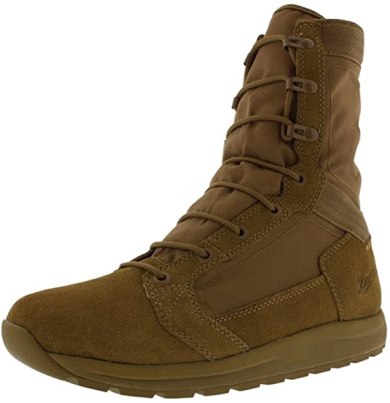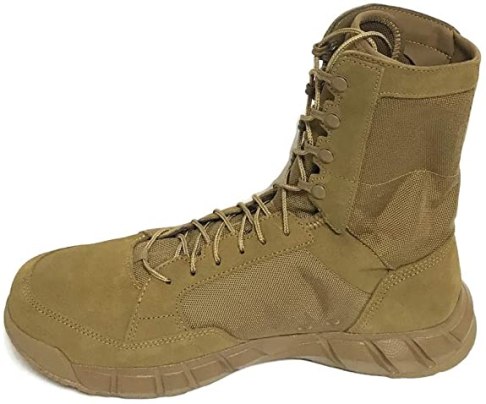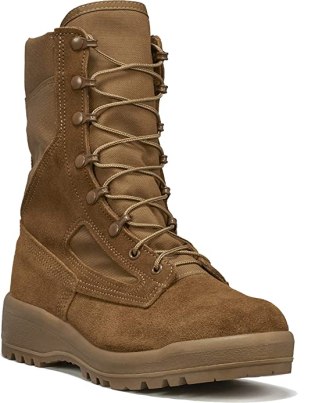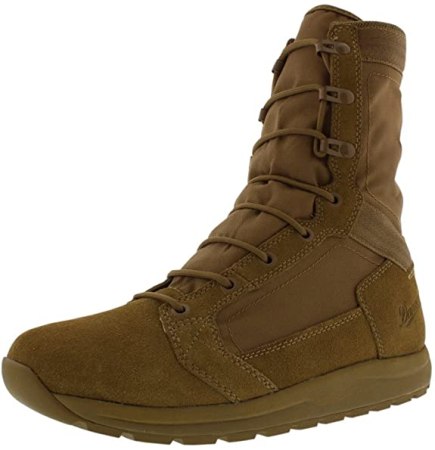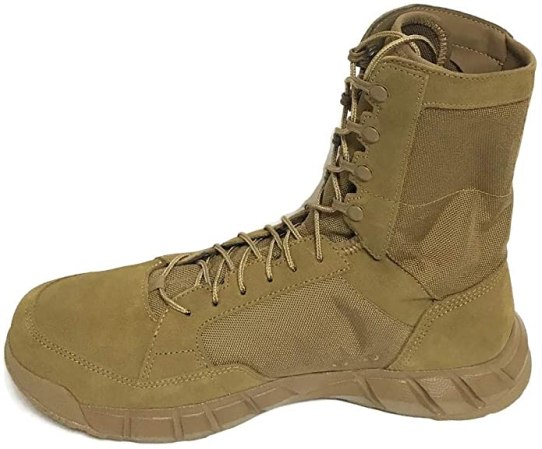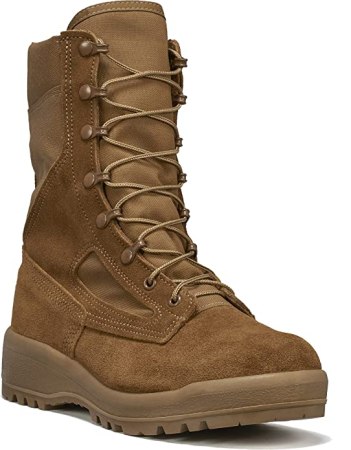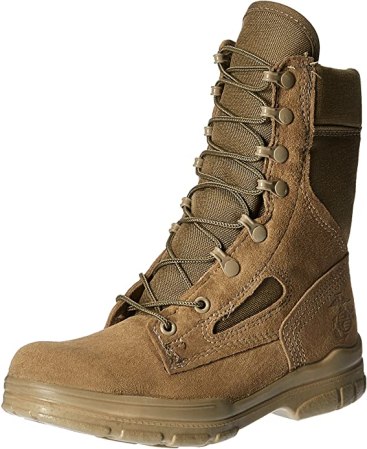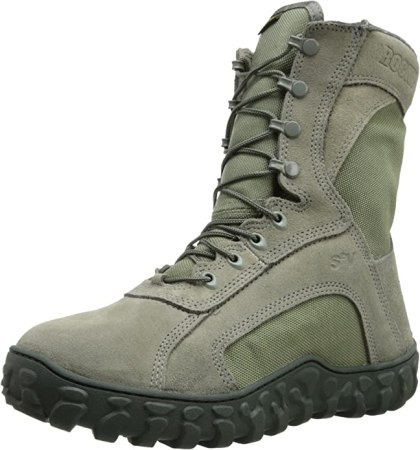We may earn revenue from the products available on this page and participate in affiliate programs.

Of all the uniform items you use on a daily basis, your combat boots might have the most significant impact on your ability to do your job. If you’ve ever gutted out a ruck march or hump with blisters and shin splints, you know what I’m talking about. The same goes for everyone who’s completed an entire field exercise with soaking wet feet, or lugged heavy combat boots through unit PT.
I bet I had at least four pairs of combat boots in rotation at any given time. I had my everyday boots that just had to look good and be comfortable. My trusty Bates Lites came out for the CFT and any kind of boots-and-utes PT. Deployment called for the rugged, but rather ugly, RAT boots. Finally, I had inspection boots that only came out of my closet for inspections and ceremonies. Mind you this was in the earthly paradise that is southern California. If I had to deal with rain and snow, I would have had even more. Each pair had its own set of advantages and capabilities. As much as it sucks to buy uniform items you rarely wear, I do think having several pairs of boots is a winning strategy. It would suck to trash your only pair of combat boots doing PT on the one morning the CO decides to get to know you.
Do yourself a favor and wear appropriate combat boots. What that means for you might change from day to day, so you should probably invest in a few different styles. This list has boots for hot weather, cold weather, running, heavy equipment operation, and the color requirements for every branch of service. Read on to find your next pair.
Best Overall Combat Boots
Danner Tachyon
Best Value Combat Boots
Oakley Light Assault 2
Best Steel-Toe Combat Boots
Belleville C300 ST
Best Combat Boots for Running
Bates USMC Lightweight
Best Air Force Combat Boots
Rocky Military u0026 Tactical Boot
Best Premium Combat Boots
Danner Rivot
Best Space Force Combat Boots
Moon Boots
Related: The best tactical boots to keep you grounded in any situation
Why should you trust us
The most common types of combat boots
Look past the endless array of shapes and colors, and you’ll see that combat boots can be neatly divided into a few categories based on their intended use. A few features separate combat boots for climate, activity, and protection. You almost certainly need more than one, and you might own one of each by the time you’re done serving.
Jungle boots/moon boots
Basic combat boots are sometimes referred to as either jungle boots or moon boots, depending on what type of climate they’re built for. It’s a good idea to own one of each in good condition at all times.
Jungle boots are thinner, lighter, and uninsulated. They feature large synthetic panels to create airflow and allow your feet to stay cool in warm environments. Open metal eyelets in the arch areas allow water to drain out, should you need to cross a body of water.
Moon boots are designed for cold weather. Instead of textiles, they use leather and insulation to keep your body heat inside. Thicker soles raise your feet off the ground to protect you from the cold.
Running boots
Once the U.S. military started emphasizing functional fitness, exercising in combat boots became standard practice across branches. Unfortunately, most combat boots are lousy to run in.
Running boots are designed for speed. They weigh very little compared to traditional combat boots and feature soles designed for running rather than rucking. If you want to improve your CFT or O-course time, these are sure to help.
Because they place a premium on lightness, running combat boots don’t hold up well under heavy loads. Wearing them on a field exercise with heavy gear can easily pack out the soles and leave your feet aching. I recommend saving these for PT and timed events.
Steel-toe boots
Most of you probably don’t need steel-toe boots, but some of you need them to do your job. Having adequate protection for your feet is critical to staying mission-ready and preserving your long-term health.
Uniform regs dictate that you can’t just roll into work with a pair of Chippewas on your feet (no matter how awesome they are), so you need to find a protective pair of combat boots like the ones on this list.
Much like running boots, these are job-specific and shouldn’t be worn for other activities like field exercises or PT. Keep them in the shop, where they belong.
What to look for when buying combat boots
All of the major combat boot manufacturers build quality products, but not every boot can do what you need it to do. Each branch of the military has requirements a pair of boots must meet to satisfy uniform regulations. Don’t waste your money on something you aren’t even allowed to wear.
You’ll also want to consider your environment. If you’re stationed in a hot, humid climate, prioritize ventilation and those little eyelets that let water escape instead of marinating your feet until you have to limp to medical. If you encounter cold weather on a regular basis, stay warm with insulated boots. Remember that combat boots look very similar, so it’s important to read the fine print.
The advantages of owning combat boots
The obvious advantage of owning combat boots is not being out of regs and getting your ass chewed every day until you get permanently assigned to the sergeant major’s hot seat. Aside from that, a decent pair of combat boots can make all the difference in your comfort and performance.
Combat boots are designed for specific environments. Some keep you cool and dry in tropical climates, some keep you warm in cold climates. Others protect your feet with steel toes. All should allow you to do your job without blisters, hot spots, and stress fractures caused by poor fit and insufficient support.
Your first goal should be to accurately determine your size. Any time you switch brands, consult the manufacturer’s sizing chart to make sure you set your feet up for success. Once you’ve done that, use this guide to find service-appropriate combat boots that can get the job done for you.
- Proper support for your feet
- Adequate ventilation in hot climates
- Sufficient warmth in cold climates
- Load-bearing soles for carrying heavy gear
- Lightweight construction for running
Pricing ranges for combat boots
- Less than $100: You can find serviceable combat boots for less than $100, but make sure you know what you’re getting. These generally perform better in garrison than in the field.
- Between $100 and $200: Most combat boots fall between $100 and $200. Expect high build quality and a wide selection of sizes and intended uses.
- More than $200: Premium combat boots offer more advanced features and will probably last a little longer than most. Steel toes often end up in this price range, too.
How we chose our top picks
The Task & Purpose team has plenty of collective experience with combat boots, but there’s always more to learn. Since none of us have worn all the options out there, I turned to the people who have––thousands of customers who shared their real-world experiences in the form of ratings and reviews. By putting our knowledge and expertise together, I’m confident you can find what you need on this list.
